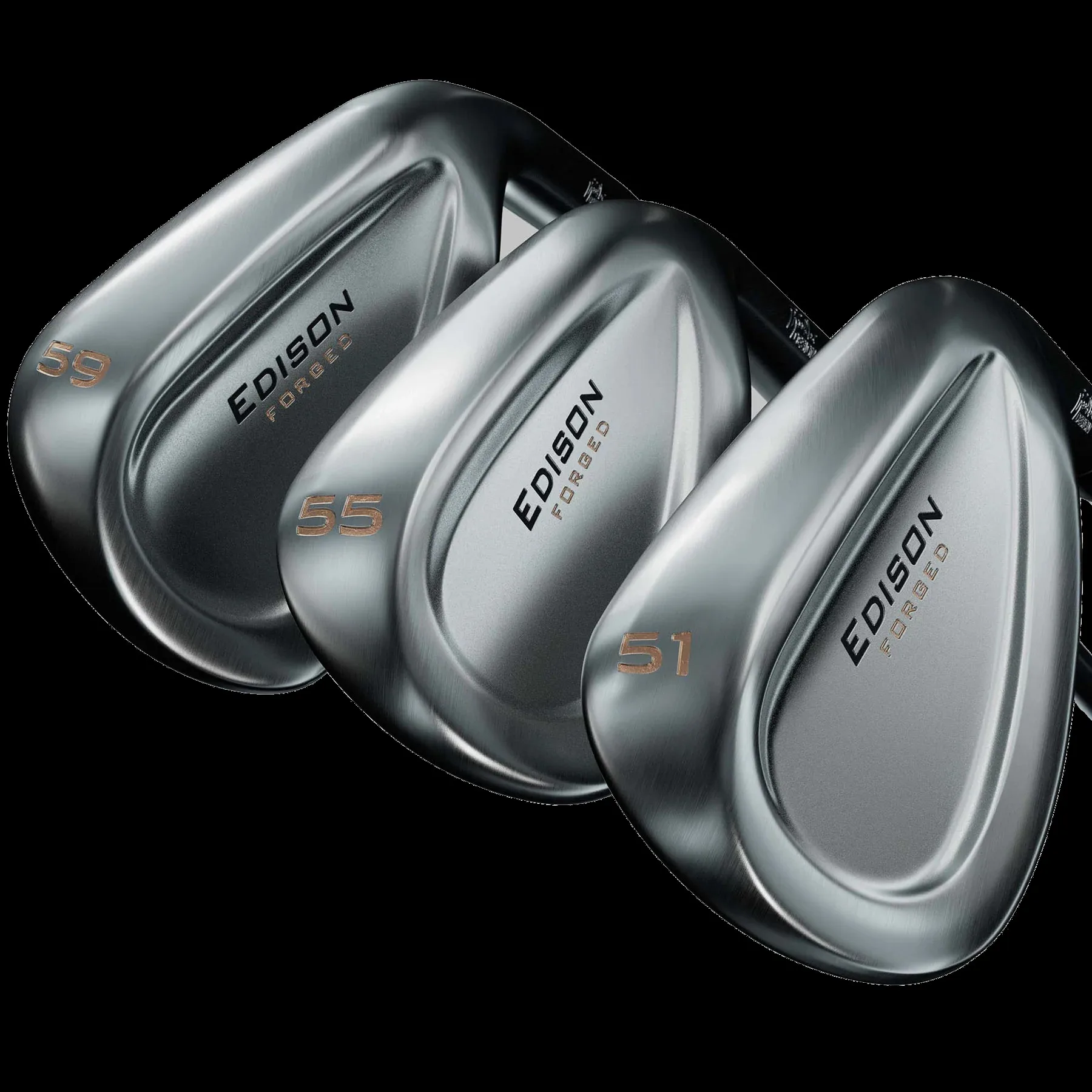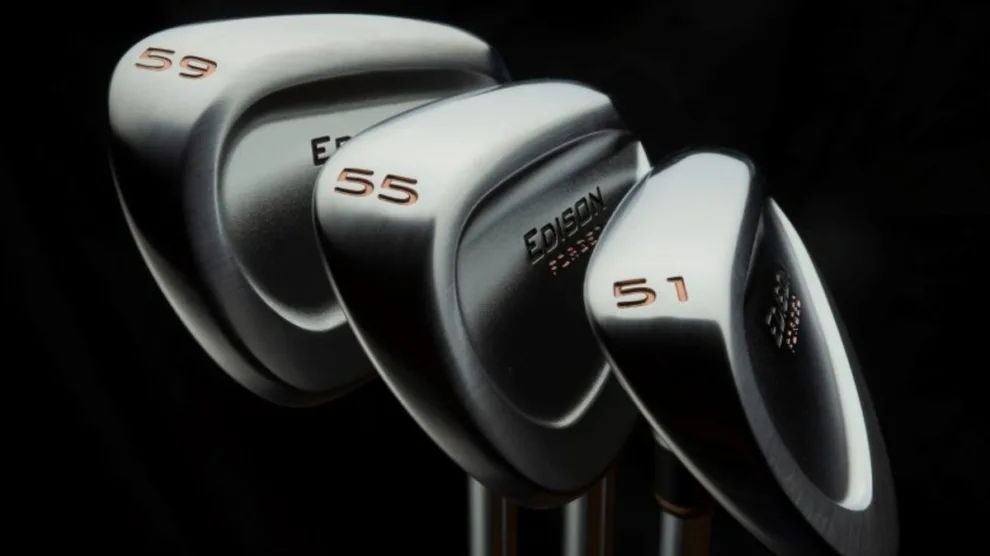One of the biggest mistakes golfers make is not replacing their equipment soon enough.
I don't mean their drivers, which typically have a five- to seven-year shelf life before being rendered obsolete. I definitely don't mean irons, which can last a decade or longer before needing much attention. I mean wedges.
Wedges are a crucial part of a golfer's bag. No matter your game, wedges play a big role in how well you score. If you're a better, longer player, then you're hitting a lot of partial wedges into greens. If you're a higher-handicap player, you're hitting a lot of wedges to scramble and clean up around the greens. Having a well-fitting, fresh wedge that can spin and grab is absolutely important to your total at the end of a round.
That's why I recently went looking for some new wedges. I had successfully worn out the wedges I had been using, and I needed to get something fresh in my hands. Just at the right moment, I found out at Edison Golf.
Two familiar names
Edison Golf is the handiwork of Terry Koehler, who has been an important designer of wedges for more than 30 years. In fact, the Ben Hogan Golf (RIP again) wedges I had been using previously feature his V-Sole design, with versatility and trailing-edge relief that is great for a player who sees lots of different courses and turf conditions.
With Edison Golf, Koehler wanted to design a wedge specifically toward the average player, not a low- or plus-handicap player who tends to flush the ball more often. With his original Edison Golf wedges, Koehler debuted a design that moved weight marginally out of the middle of the back of the clubhead and positioned it toward the outer edges and right behind the impact zone to offer consistent energy transfer across the hitting zone.
Koehler harps on smash factor, which is really a factor of ball speed to swing speed. If you have better smash factor across the hitting zone on a wedge, the better your distance control will be, which is really the most important thing in a wedge. By moving weight above the intended hitting zone and on the outer edges of the clubhead, Koehler is offering a more consistent dispersion on those wedge strikes a few grooves too high -- common for an average golfer. In his Version 2.0 wedges, Koehler has taken this concept even further, positioning 42 percent more of the clubhead's mass at or above the typical strike groove to offer maximum benefit on wedge shots struck too high on the face.
The Edison wedges also feature what's now dubbed the Koehler sole, which has a higher-bounce leading edge and a low-bounce on the trailing edge. If you swing steep or play in softer conditions, the wedge will play like a high-bounce wedge. If you swing shallow or in firmer conditions, it'll act as a low-bounce wedge. No need to switch between grinds and bounces, Koehler says.

Getting fit
While Edison wedges may only come in a single sole, there are plenty of other factors that determine how well they fit a golfer. When it came time to figure out the wedges I would get, Koehler hopped on the phone with me personally to talk through the results of Edison's easy, accurate online fitting quiz. The quiz asks about your set makeup, including your scoring irons and wedges, identifying gaps and asking how you use your wedges in a typical round. The idea is to dial in what could be improved with better gapping and fit wedges to your style of play.
I'm a plus-handicap golfer who hits a lot of wedges when I play golf. I hit a lot of partial wedges, and I prefer to dead-hand scoring shots and pitch shots alike, preferring to see the ball run out a little toward the target. Koehler asked me about perhaps adding length to my wedges because I'm a bit taller and on the edge of wanting to back to plus-1-inch irons. We talked about gapping the wedges to get rid of the second wedge that came with my iron set, as it proved harder to control and something I didn't like looking at compared to a more traditional wedge.
We settled on a set of three wedges: 49, 53 and 47 degrees, complete with midsize grips to match my irons. Edison Golf sent them promptly, and they arrived quickly.
The results
I'm a big fan of my Edison wedges. (They are the OG version; so I haven't tried out the 2.0s yet.) I love having a 49-degree gap wedge that looks like my other short-game wedges. It's easier to control and has filled in a gap in my bag between 105 and 115 yards. The 53- and 57-degree wedges complement the set nicely, and there's no real difference in coverage between these two wedges as opposed to the 52- and 56-degree wedges I've typically used.
I rarely hit these wedges fat and even more rarely hit them thin. It's just strike after strike after strike in the ideal hitting zone. Part of that is me, but the wedge is key. I feel good standing over each shot, no matter the lie. The versatility of the Koehler sole is idea for me, as I like to use each of my wedges to hit a variety of different shots. I can play a bump-and-run, a standard pitch, a chip, a flop and a low-cutting bullet with ease, no matter where I play golf. Distance control has rarely been a problem with my wedge play, and it's still a strong suit now, but the occasional mishit definitely goes farther and closer to the target to help bail me out on occasion. The grooves offer plenty of zip and have great stopping power on the occasional full-swing shot.
These wedges are a winner.
The Edison Golf 2.0 wedges are about $185 each if you order a set of three, and they're $181 if you order a set of four. The customer service was excellent, and the company offers a risk-free return if the wedges just don't measure up -- but they will.


 OPEN MINI PLAYER
OPEN MINI PLAYER